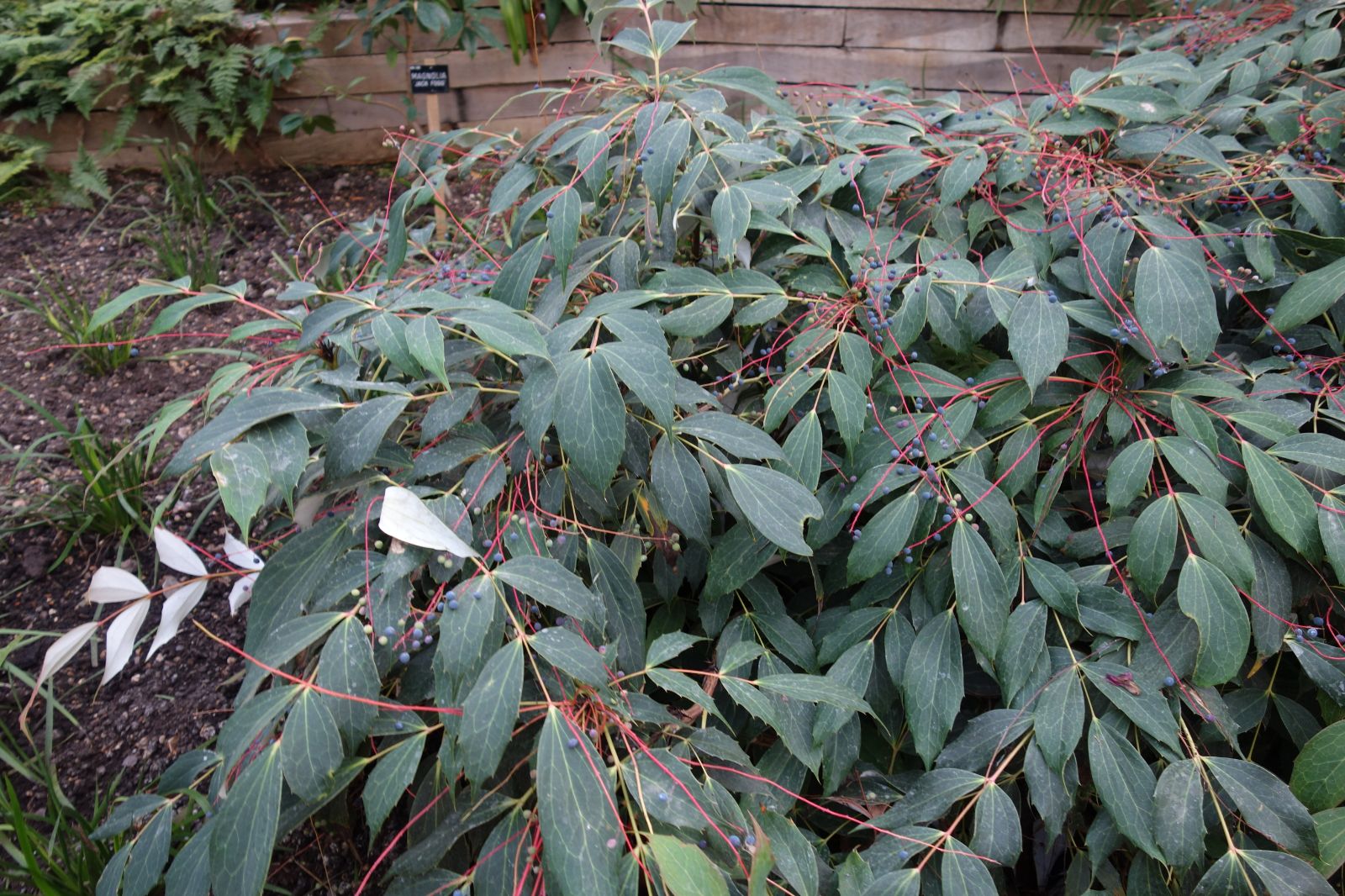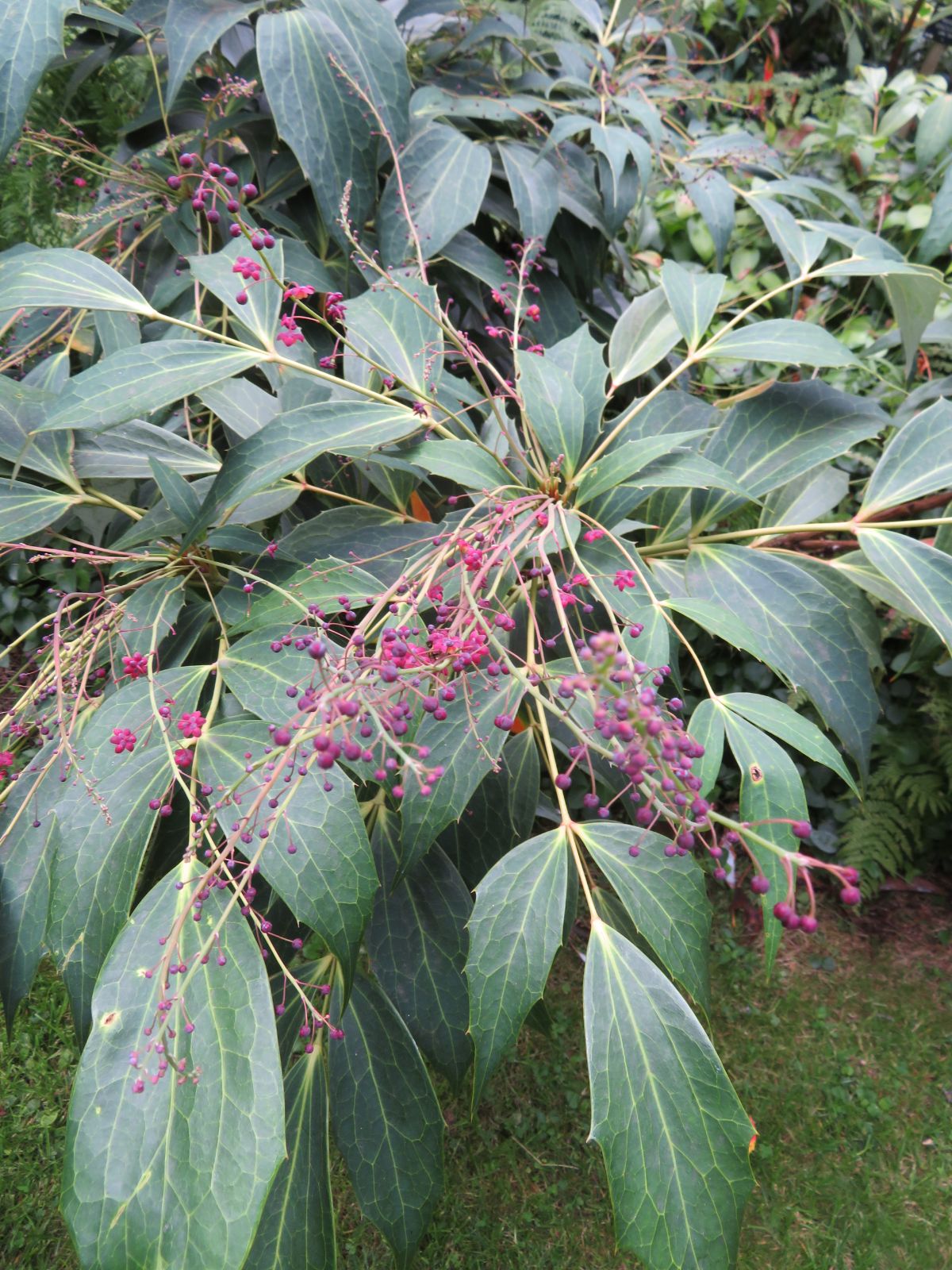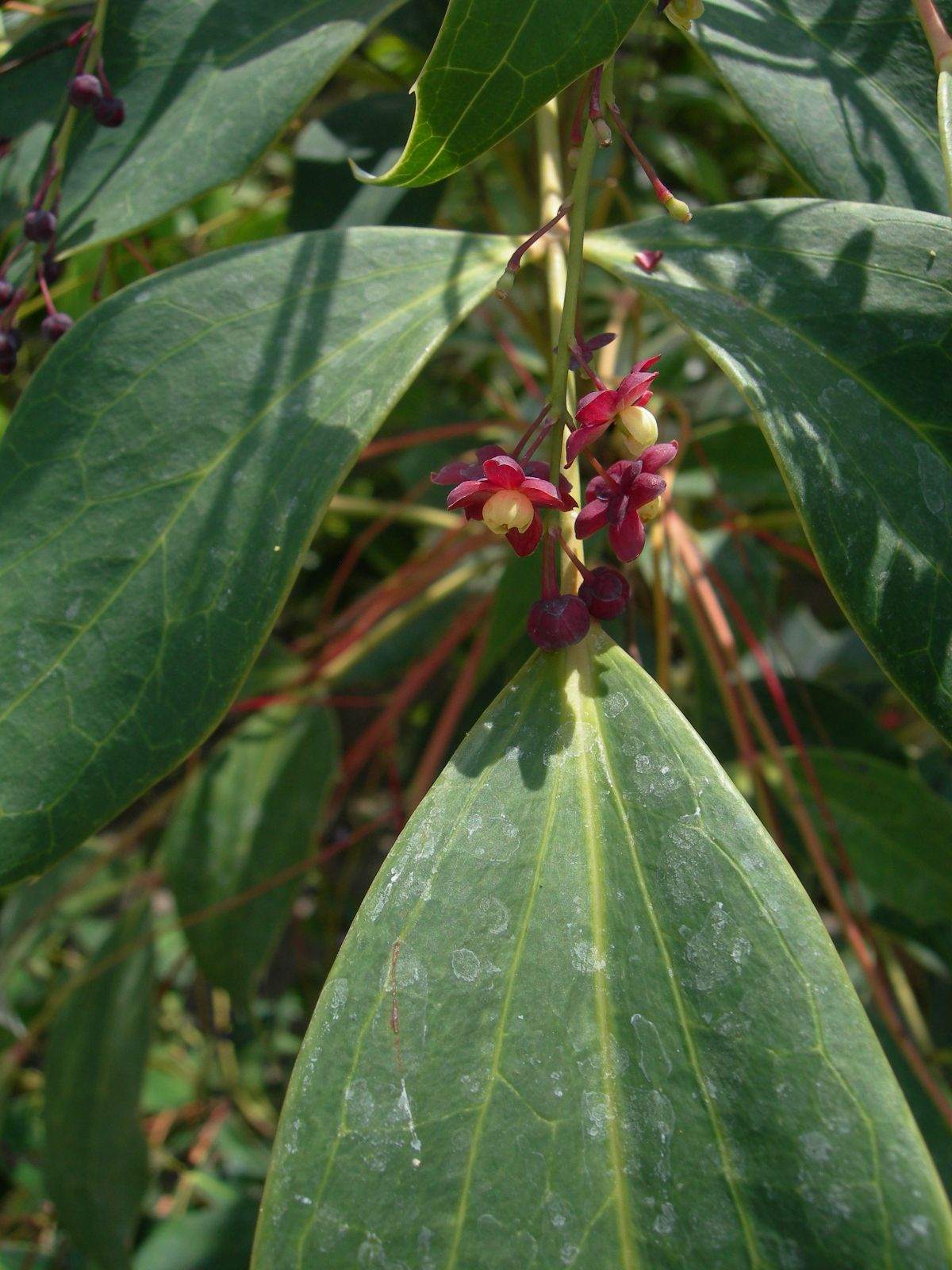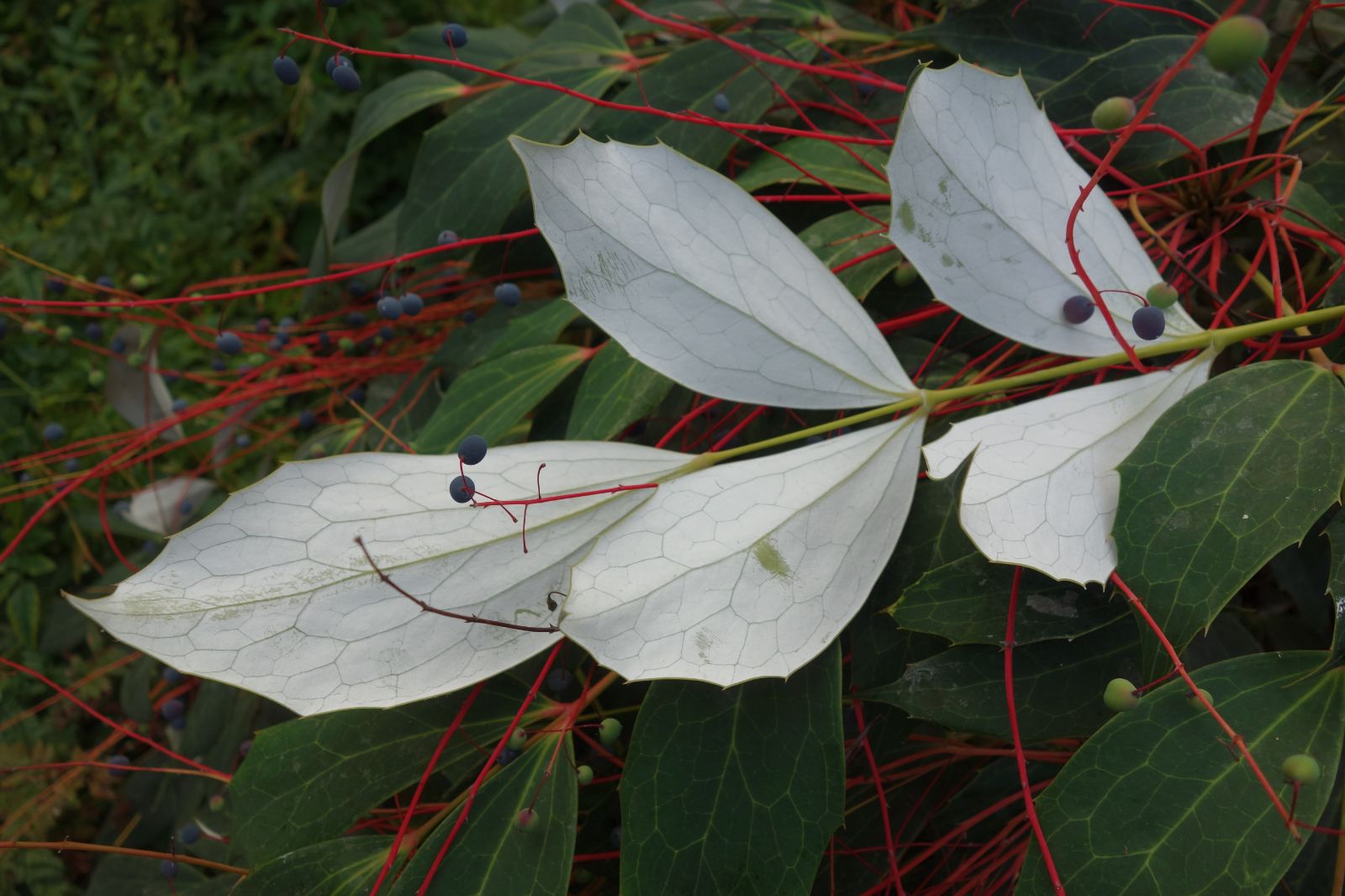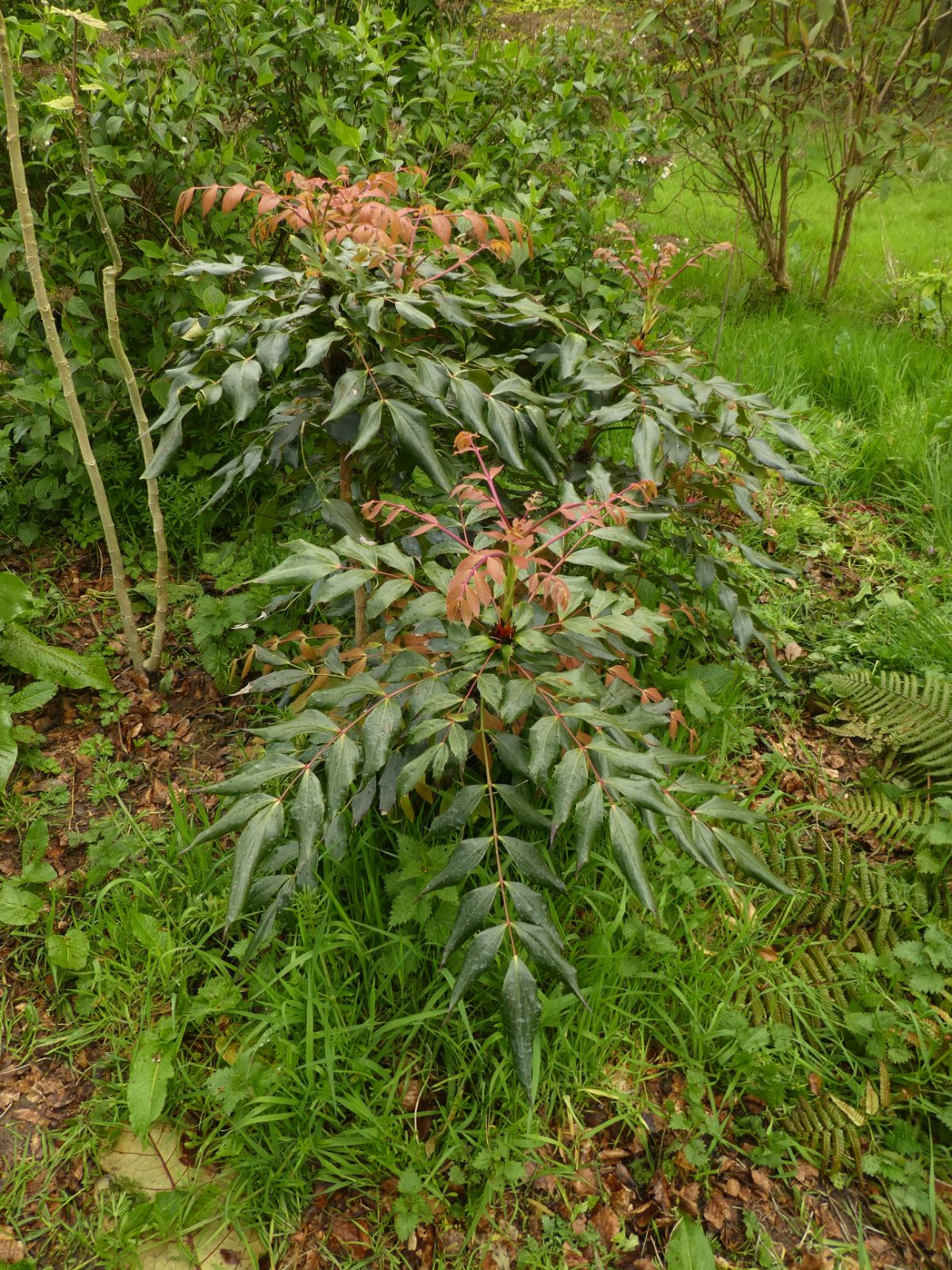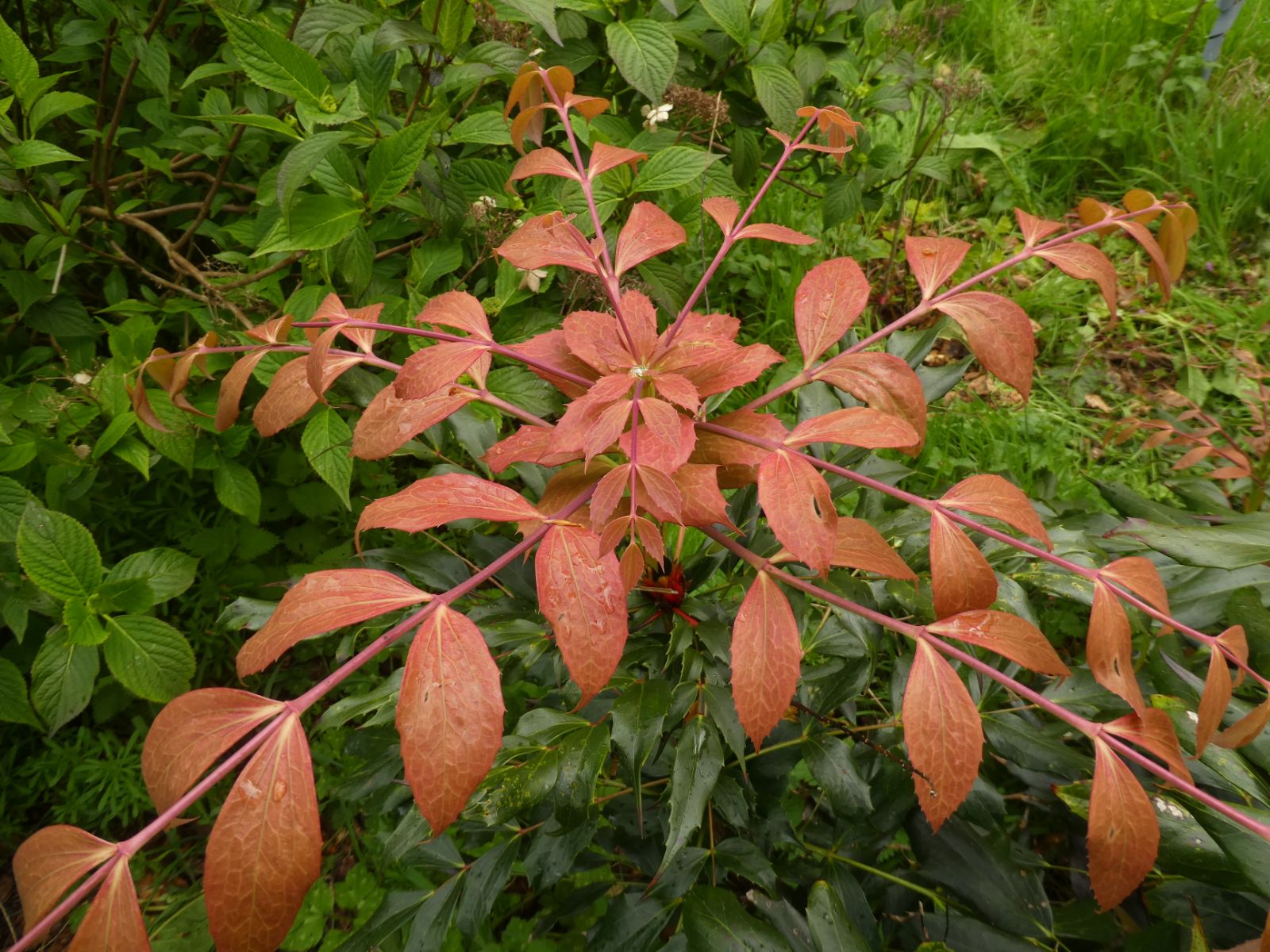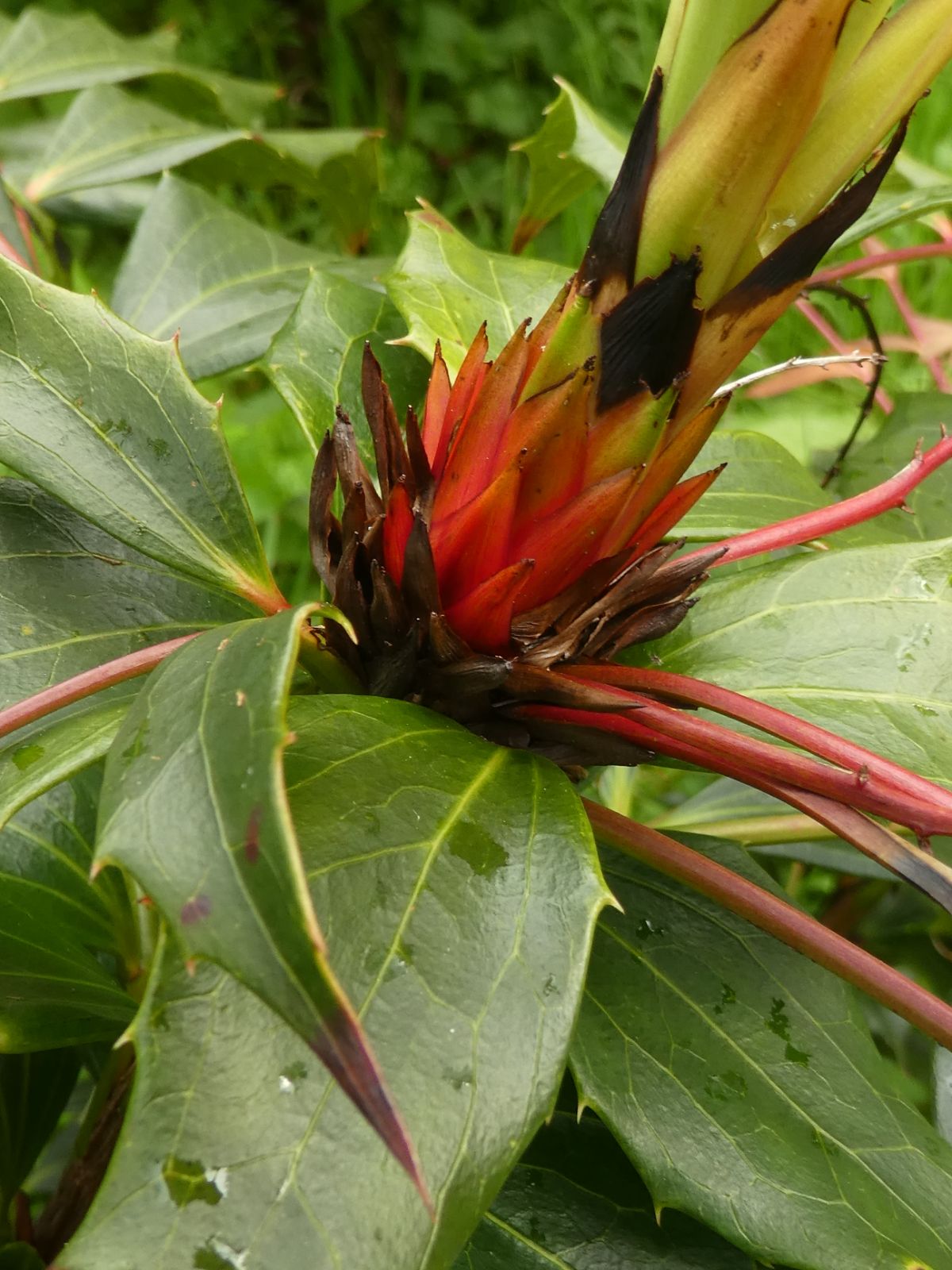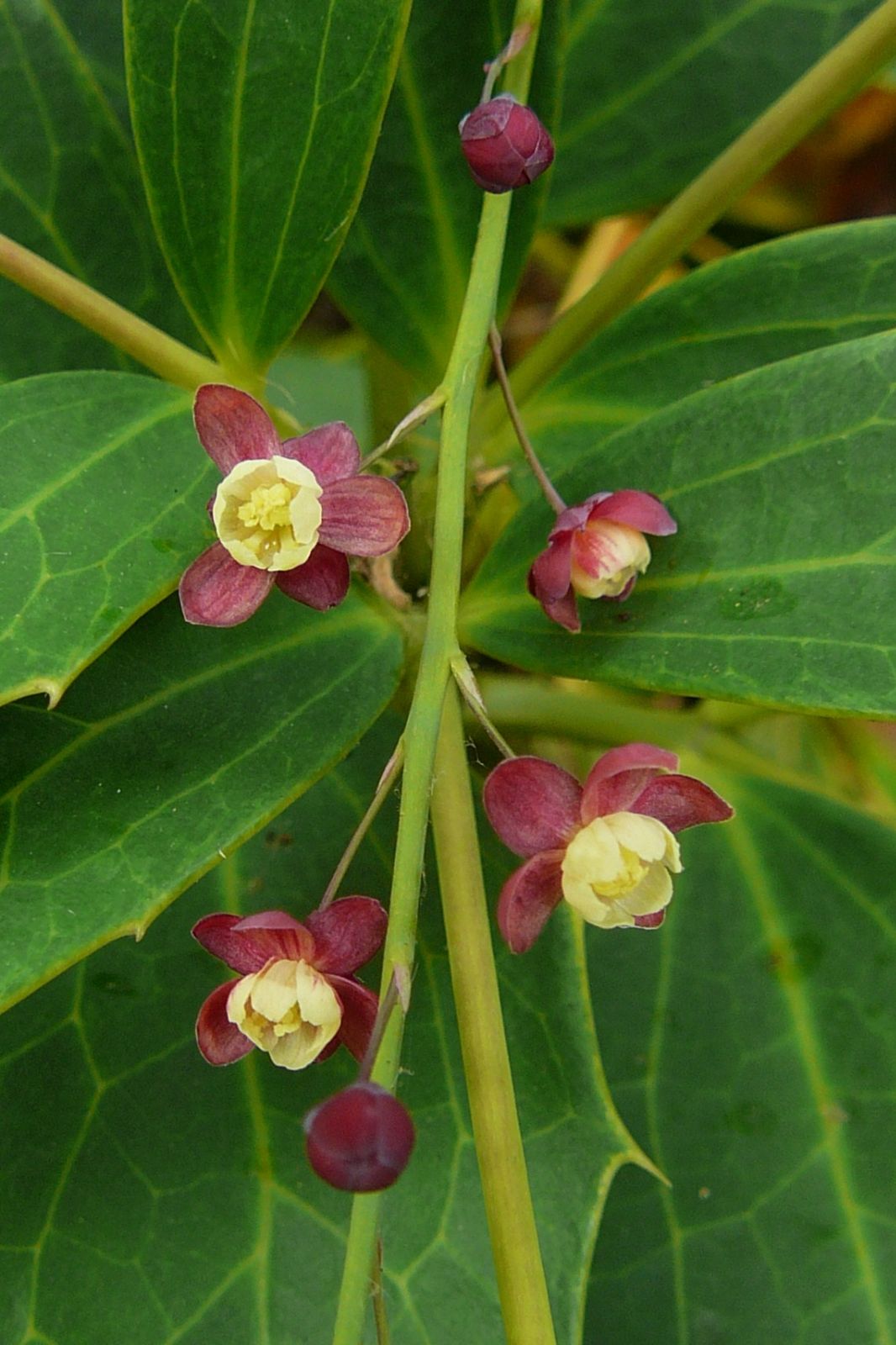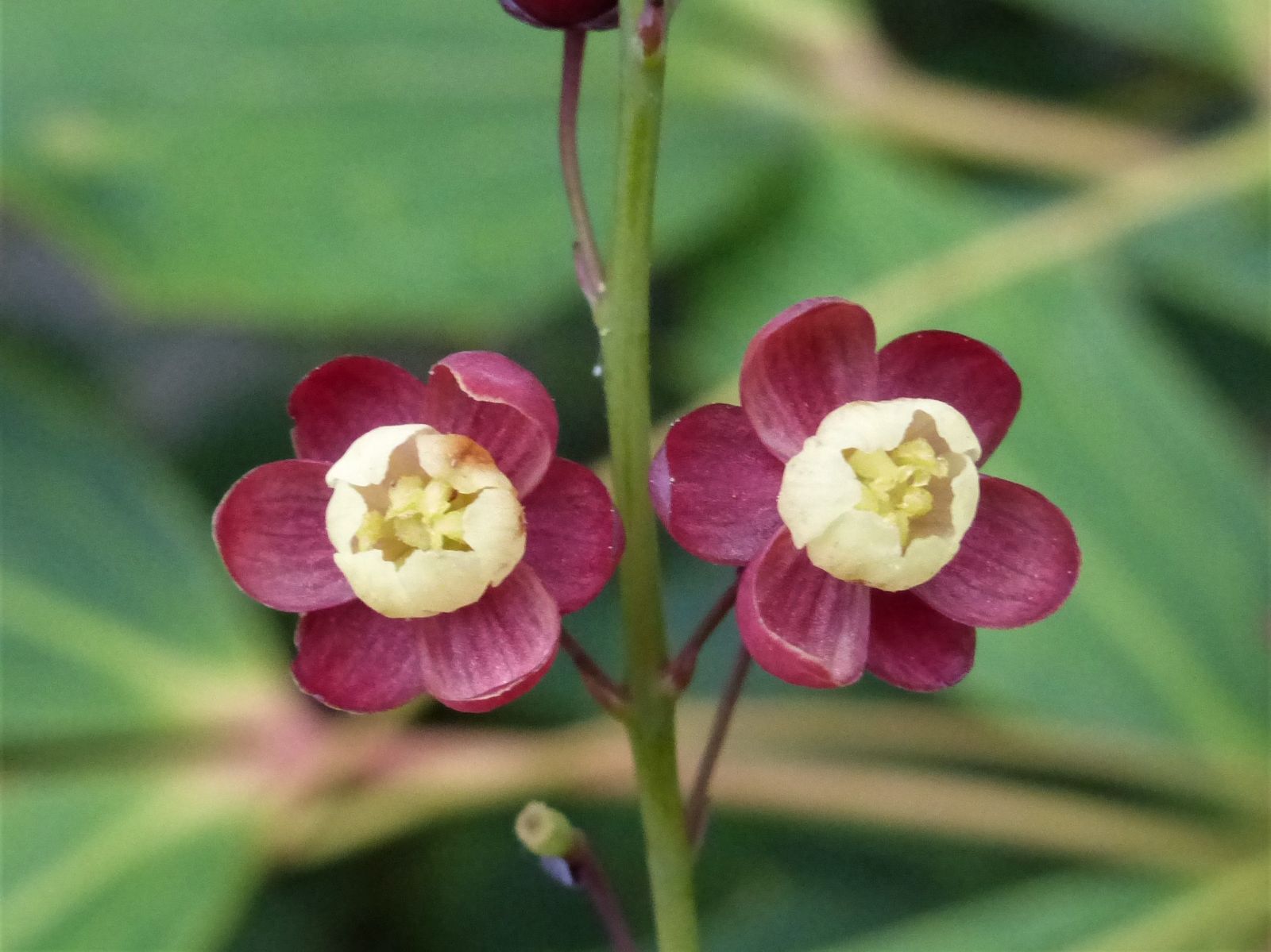Mahonia gracilipes
Credits
Article from Bean's Trees and Shrubs Hardy in the British Isles
Recommended citation
'Mahonia gracilipes' from the website Trees and Shrubs Online (treesandshrubsonline.
Genus
Synonyms
- Berberis gracilipes Oliver
Other taxa in genus
- Mahonia acanthifolia
- Mahonia aquifolium
- Mahonia arguta
- Mahonia 'Charity'
- Mahonia fortunei
- Mahonia fremontii
- Mahonia haematocarpa
- Mahonia 'Heterophylla'
- Mahonia japonica
- Mahonia lomariifolia
- Mahonia × media
- Mahonia nervosa
- Mahonia nevinii
- Mahonia pinnata
- Mahonia repens
- Mahonia schiedeana
- Mahonia trifolia
- Mahonia trifoliolata
A small, suckering shrub. Leaves up to 2 ft long, with a few pairs of widely spaced leaflets, the lowermost pair inserted well above the base of the rachis. The leaflets are all more or less equal in size, mostly 31⁄2 to 51⁄2 in. long, 1 to 2 in. wide, cuneate at the base, with a few short teeth towards the apex, dull sea-green and reticulate above, covered beneath with a chalky bloom that wears away with age; racemes about three in each cluster, lax, attaining a length of almost 2 ft. Flowers small, widely spaced, on long, slender pedicels.
This species was described in 1887 from a specimen collected by Faber on Mount Omei in western Szechwan, where it was later found by Wilson but apparently not introduced by him and unknown to cultivation until two plants were brought from the mountain in 1980, one collected by Roy Lancaster and the other by the Dutch botanist H. van de Laar. The former is at the Savill Garden, Windsor Great Park, and the other at the Boskoop Experimental Station. Both, grown under glass, have produced flowers in which the inner, petaloid whorl is white and the sepaloid whorl brownish purple, an unusual and perhaps unique feature in this genus. Whether it is characteristic of the species as a whole it is impossible to say, botanical accounts being based only on a few dried specimens.

